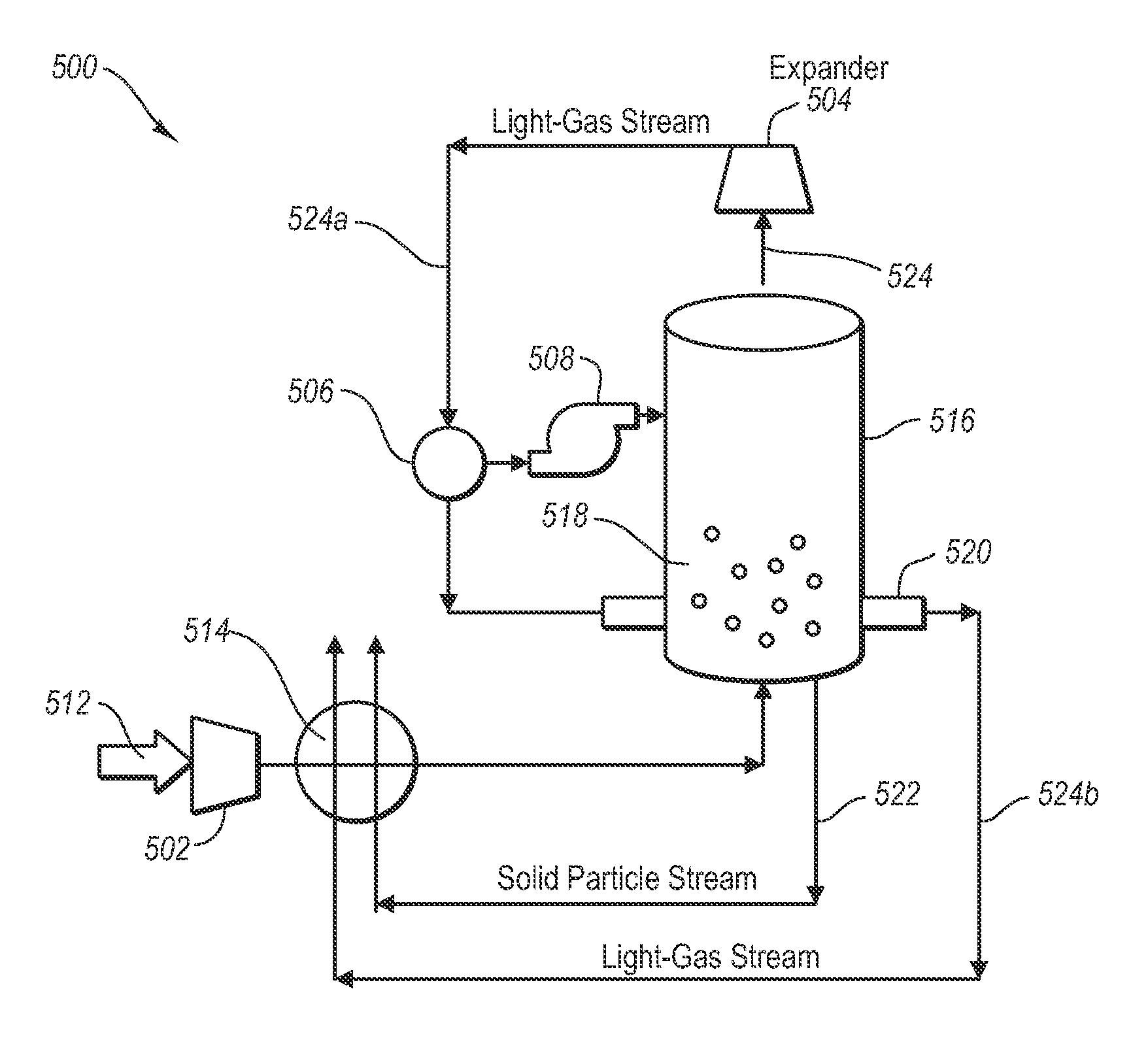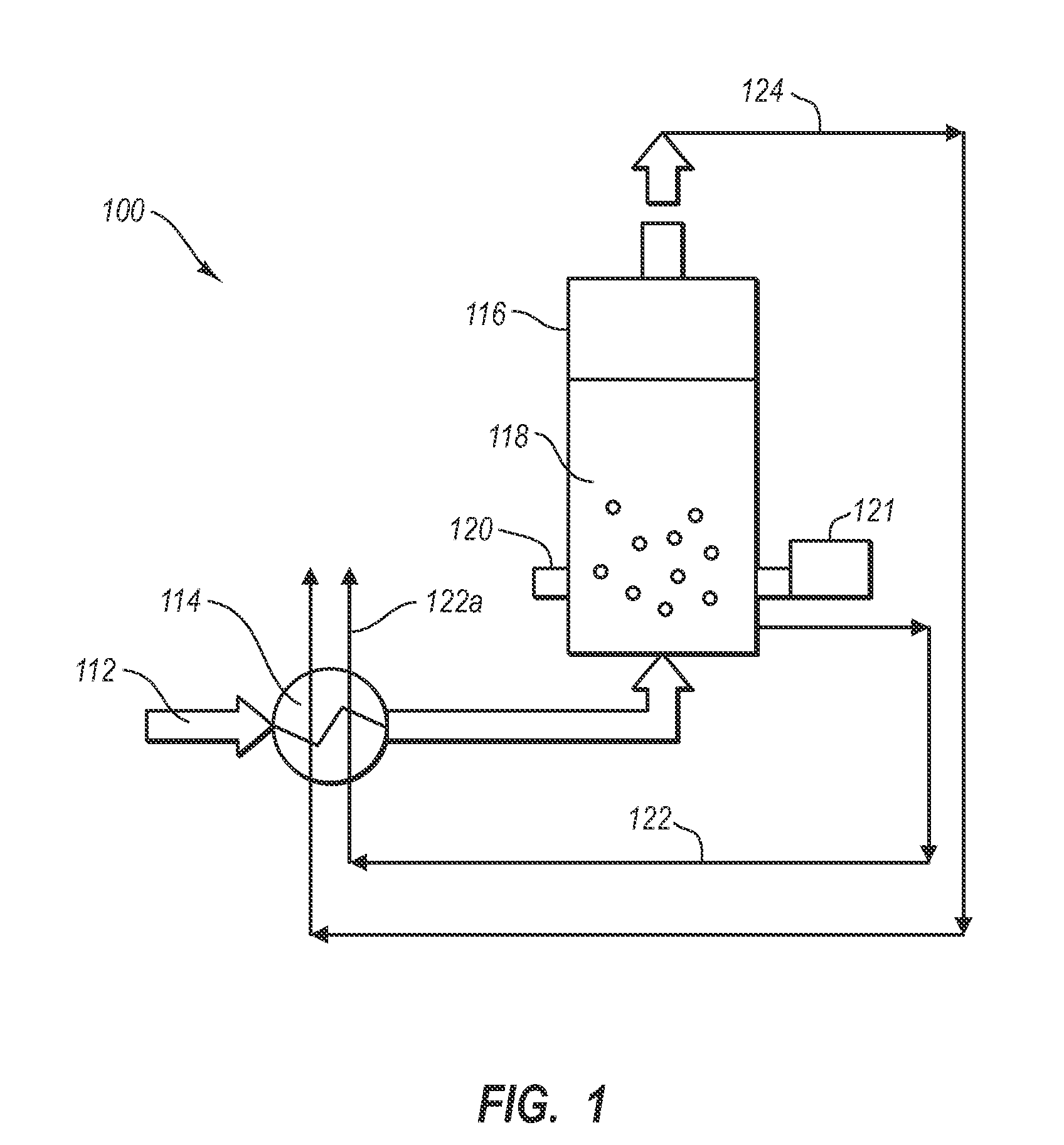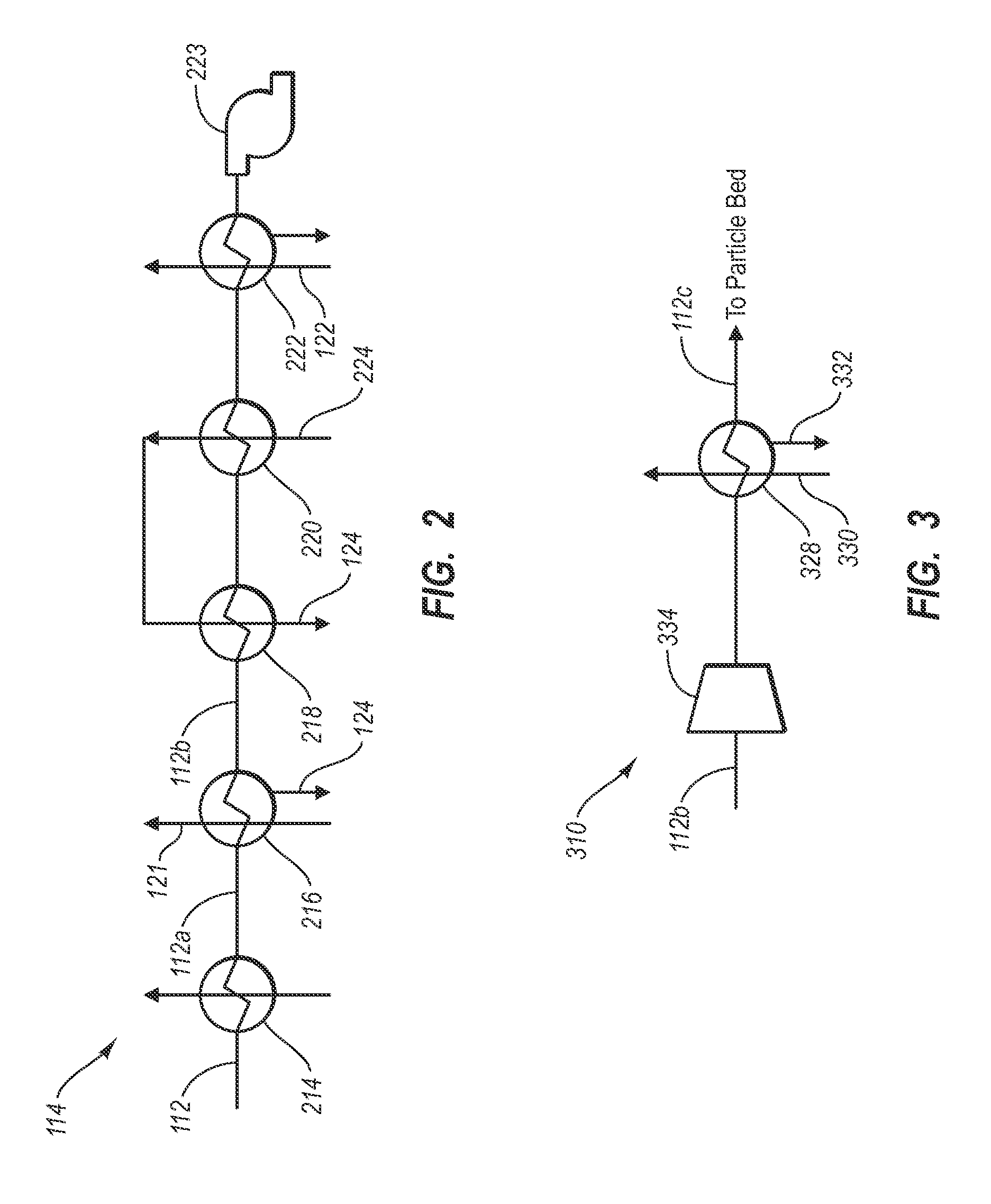Methods and systems for separating condensable vapors from gases
- Summary
- Abstract
- Description
- Claims
- Application Information
AI Technical Summary
Benefits of technology
Problems solved by technology
Method used
Image
Examples
Embodiment Construction
[0029]The systems and methods disclosed herein relate to separating condensable vapors from a process stream (e.g., the flue gas from a power plant) to form a solid and a separated light gas stream. For example, in one embodiment, the methods and systems relate to condensing carbon dioxide vapors from a process stream that includes carbon dioxide and nitrogen. The systems and methods employ a particle bed cooled by an in-bed heat exchanger to desublimate the condensable vapors. The vapors are condensed on the bed particles to form a solid or adsorbed liquid while the lighter gases, which are not condensed, form a separated light-gas stream. The condensed vapors can be used in any desired way. For example, where the condensed vapors are carbon dioxide, the solid carbon dioxide can then be melted and sequestered using any suitable sequestration technique.
[0030]The systems and methods of the invention can be used to separate condensable vapors in any process stream that includes a mixt...
PUM
| Property | Measurement | Unit |
|---|---|---|
| Temperature | aaaaa | aaaaa |
| Pressure | aaaaa | aaaaa |
| Pressure | aaaaa | aaaaa |
Abstract
Description
Claims
Application Information
 Login to View More
Login to View More - R&D
- Intellectual Property
- Life Sciences
- Materials
- Tech Scout
- Unparalleled Data Quality
- Higher Quality Content
- 60% Fewer Hallucinations
Browse by: Latest US Patents, China's latest patents, Technical Efficacy Thesaurus, Application Domain, Technology Topic, Popular Technical Reports.
© 2025 PatSnap. All rights reserved.Legal|Privacy policy|Modern Slavery Act Transparency Statement|Sitemap|About US| Contact US: help@patsnap.com



